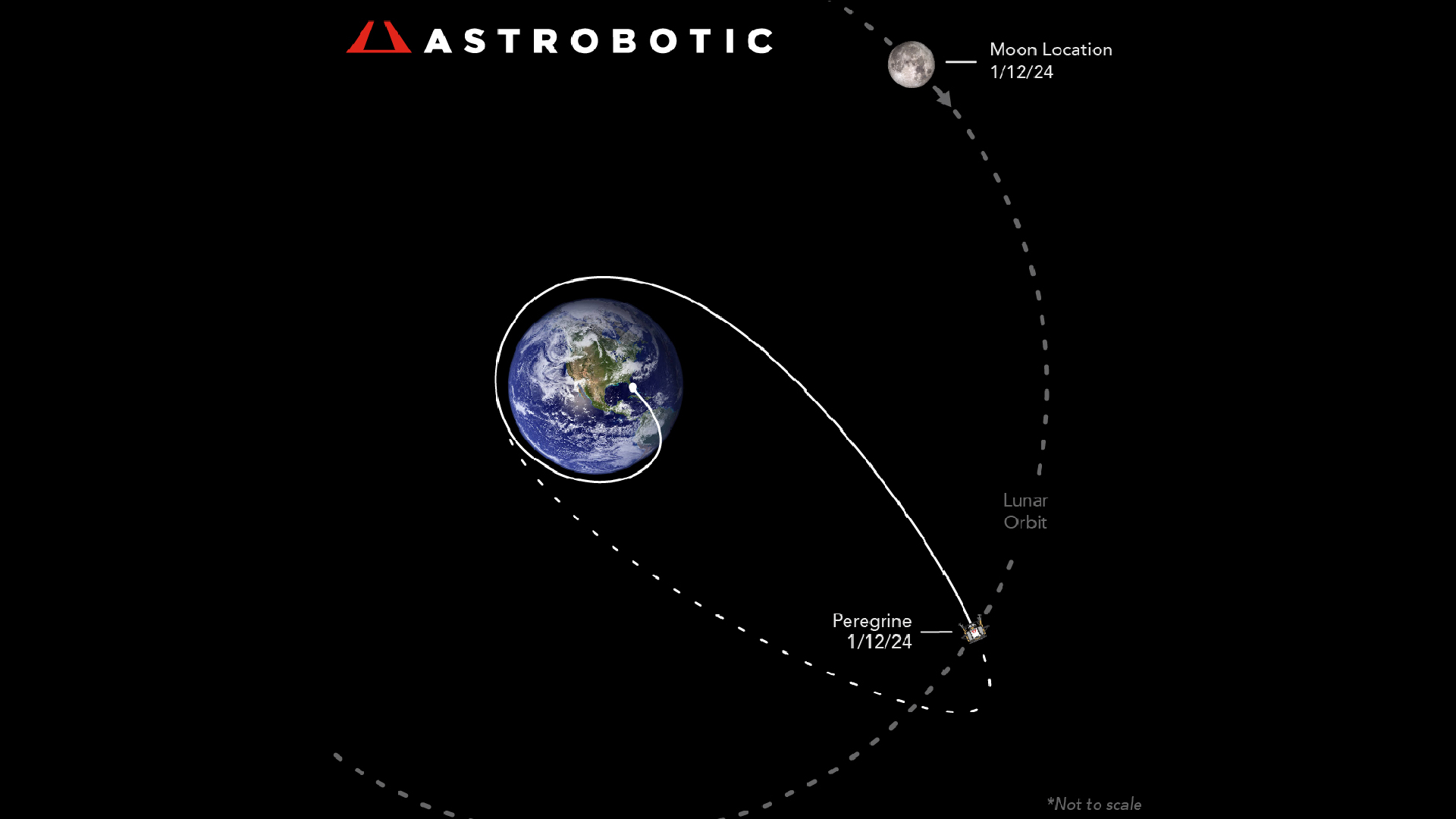The private lunar lander Peregrine, which suffered a fuel leak shortly after launch last week, is now on track to collide with Earth, its construction company said on Saturday (Jan 13).
Peregrine was launched toward the Moon on January 8 by a United Launch Alliance Vulcan Centaur rocket, but suffered a critical fuel leak shortly after separation from the booster. The loss of that fuel destroyed Peregrine's chances of a soft landing on the moon next month, according to its builder, Astrobotic. As the agency struggles to keep the lander alive as long as possible, the probe's days are certainly numbered because of its trajectory, Astrobotic said.
“Our analysis efforts are challenged by propellant leakage, which adds uncertainty to predictions of the vehicle's trajectory,” Astrobotic wrote. In an update on X (formerly Twitter) Saturday. “Our latest estimate now shows the spacecraft is on its way to Earth, where it will burn up in Earth's atmosphere.”
Astrobotic did not include an expected date for when Peregrine could reenter Earth's atmosphere, although the Pittsburgh-based company's engineers continue to work on recovering the spacecraft.
“The team is currently evaluating options and we will update as soon as we can,” Astrobotic wrote in the update. On Sunday, Peregrine was about 242,000 miles (389,000 kilometers) from Earth, beyond the orbit of the Moon, which orbits Earth about 238,000 miles (384,400 km).
Related: The failure of the private Peregrine moon lander won't stop NASA's ambitious commercial lunar program

Astrobotic's Peregrine lander is the first US private lunar lander ever launched and the first mission to carry NASA experiments and commercial payloads to the Moon, and the first to fly under NASA's Commercial Lunar Payloads Services program. It carries five NASA experiments and 15 other payloads for various customers, including human remains for burial on the Moon for Celestis and Elysium Space.
The Peregrine lander attempted to land on the moon on February 23, but a fuel leak made that impossible, Astrobotic said as the situation developed. In recent days, the leak has subsided, allowing engineers to extend its life.
“The propellant leak has decreased significantly and is no longer the team's top priority,” Astrobotic said in its update, adding that a soft lunar landing is still unlikely.
Astrobot officials and NASA are scheduled to hold a press conference Thursday (Jan. 18) to discuss the status of the mission.